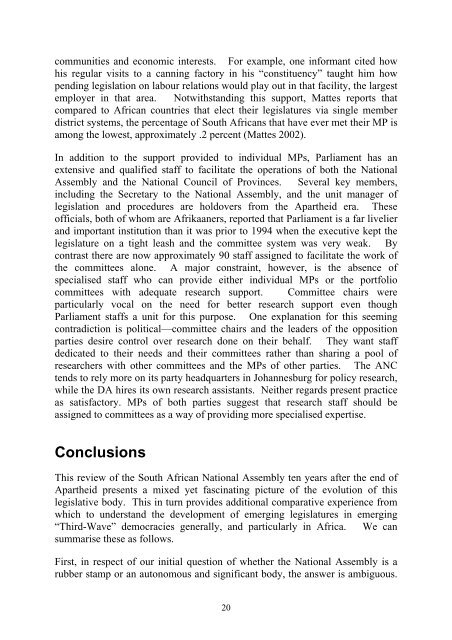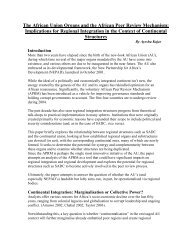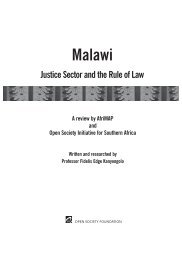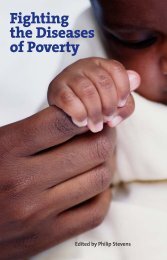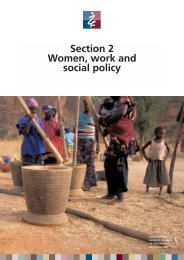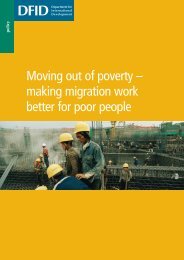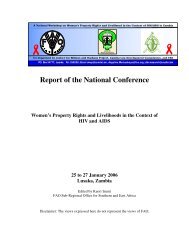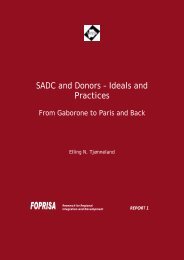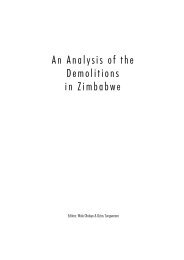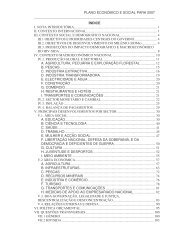400Kb ~ 2 min (33 pages) - SARPN
400Kb ~ 2 min (33 pages) - SARPN
400Kb ~ 2 min (33 pages) - SARPN
Create successful ePaper yourself
Turn your PDF publications into a flip-book with our unique Google optimized e-Paper software.
communities and economic interests. For example, one informant cited howhis regular visits to a canning factory in his “constituency” taught him howpending legislation on labour relations would play out in that facility, the largestemployer in that area. Notwithstanding this support, Mattes reports thatcompared to African countries that elect their legislatures via single memberdistrict systems, the percentage of South Africans that have ever met their MP isamong the lowest, approximately .2 percent (Mattes 2002).In addition to the support provided to individual MPs, Parliament has anextensive and qualified staff to facilitate the operations of both the NationalAssembly and the National Council of Provinces. Several key members,including the Secretary to the National Assembly, and the unit manager oflegislation and procedures are holdovers from the Apartheid era. Theseofficials, both of whom are Afrikaaners, reported that Parliament is a far livelierand important institution than it was prior to 1994 when the executive kept thelegislature on a tight leash and the committee system was very weak. Bycontrast there are now approximately 90 staff assigned to facilitate the work ofthe committees alone. A major constraint, however, is the absence ofspecialised staff who can provide either individual MPs or the portfoliocommittees with adequate research support. Committee chairs wereparticularly vocal on the need for better research support even thoughParliament staffs a unit for this purpose. One explanation for this see<strong>min</strong>gcontradiction is political—committee chairs and the leaders of the oppositionparties desire control over research done on their behalf. They want staffdedicated to their needs and their committees rather than sharing a pool ofresearchers with other committees and the MPs of other parties. The ANCtends to rely more on its party headquarters in Johannesburg for policy research,while the DA hires its own research assistants. Neither regards present practiceas satisfactory. MPs of both parties suggest that research staff should beassigned to committees as a way of providing more specialised expertise.ConclusionsThis review of the South African National Assembly ten years after the end ofApartheid presents a mixed yet fascinating picture of the evolution of thislegislative body. This in turn provides additional comparative experience fromwhich to understand the development of emerging legislatures in emerging“Third-Wave” democracies generally, and particularly in Africa. We cansummarise these as follows.First, in respect of our initial question of whether the National Assembly is arubber stamp or an autonomous and significant body, the answer is ambiguous.20


